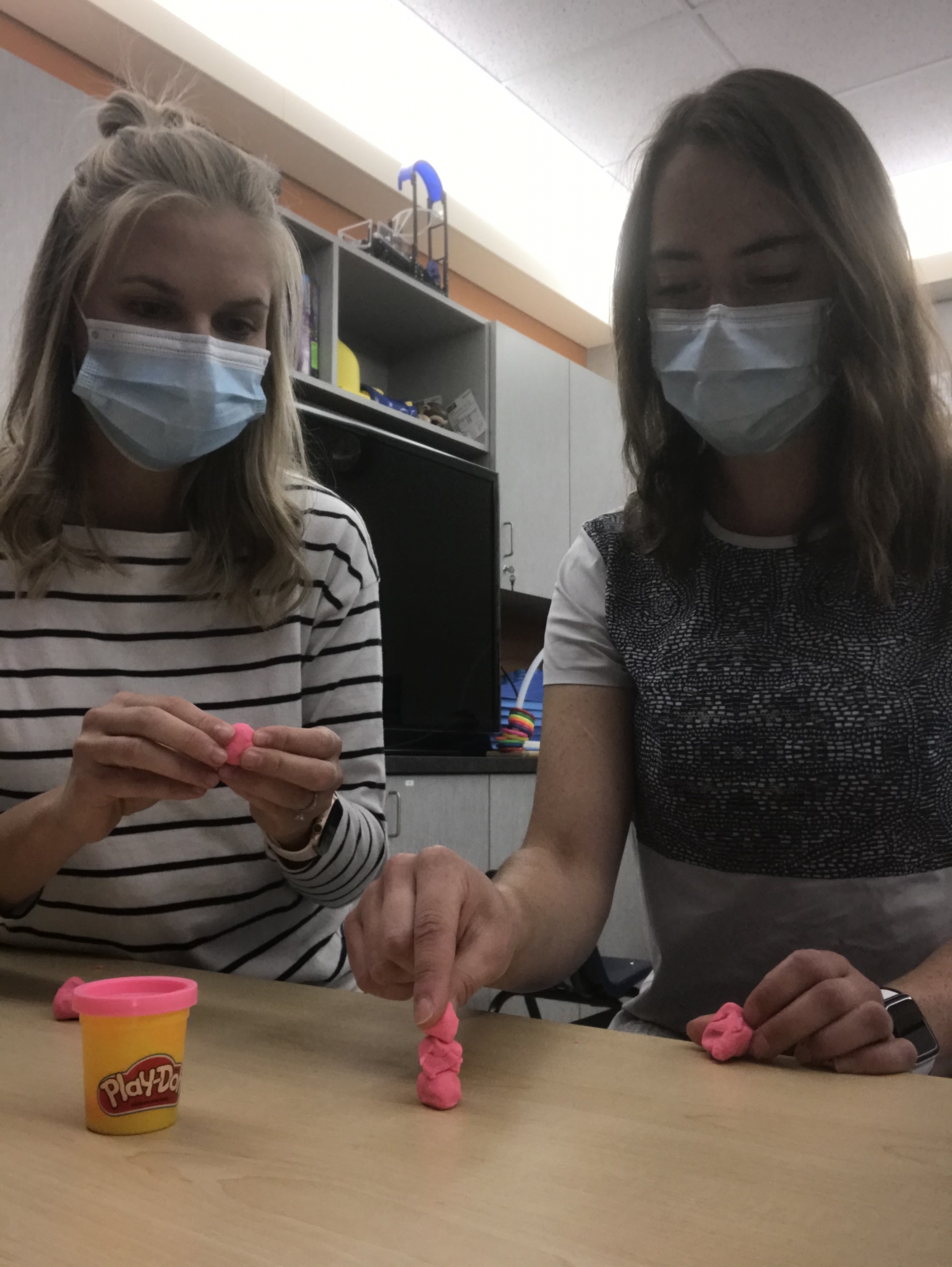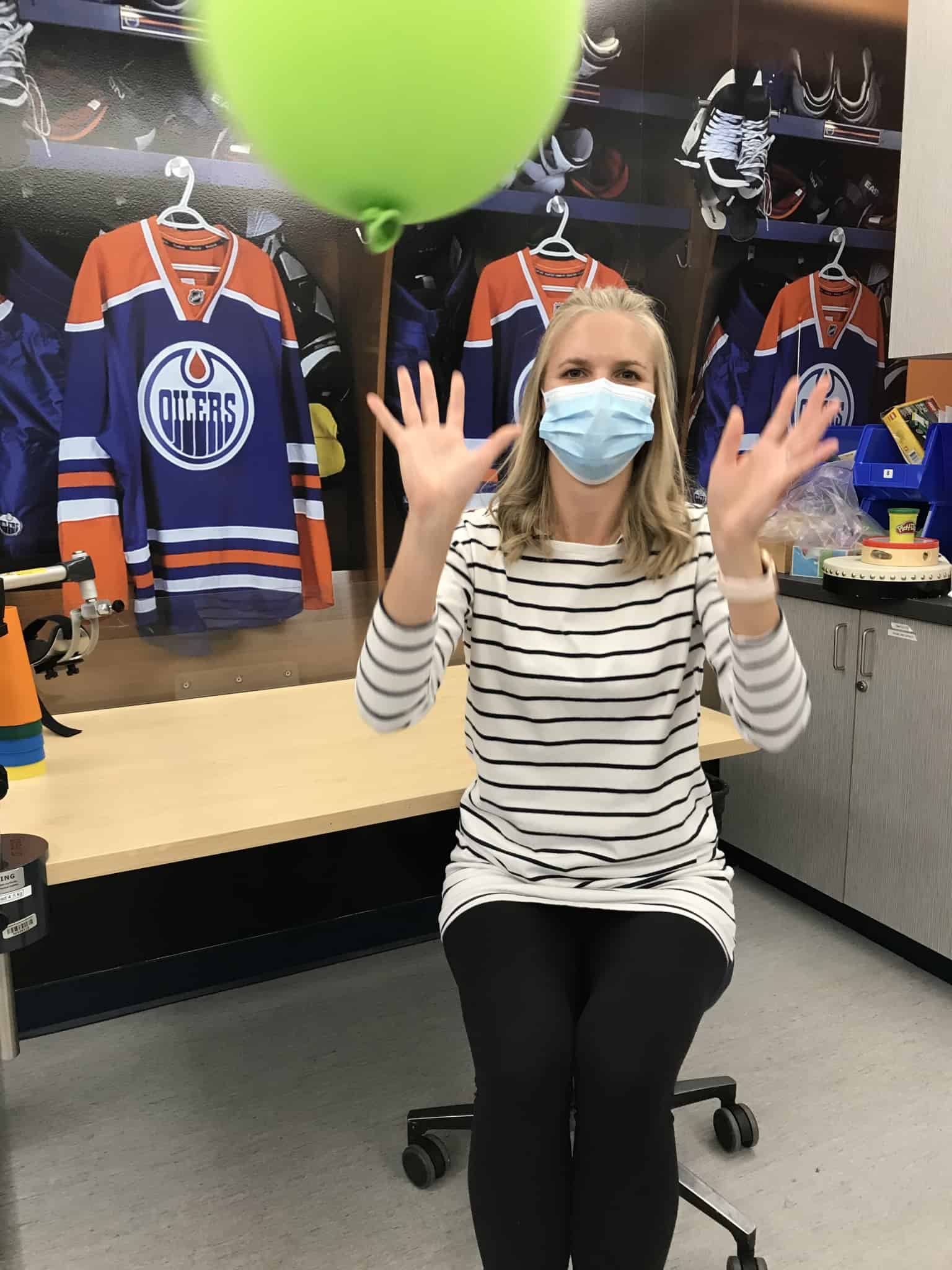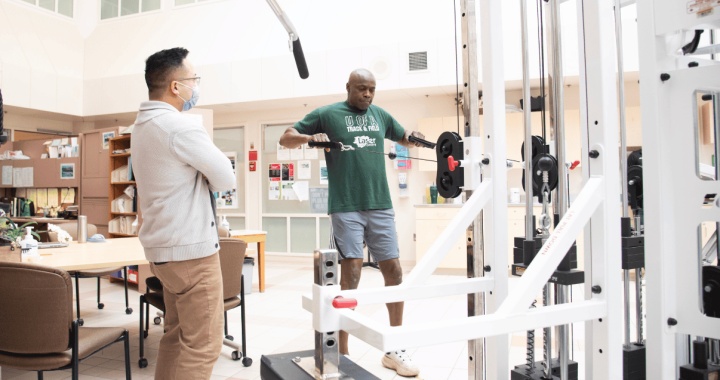Celebrating OT’s in October
October is Occupational Therapist month which makes it the perfect time to learn more about what it means to be an OT. They are one part of a multi-disciplinary team that helps patients with complex rehabilitation needs at the Glenrose Rehabilitation Hospital.
Two of the talented Occupational Therapists at the Glenrose Rehabilitation Hospital answered questions about their roles, patients and the best part of their jobs – meet Andrea and Tessa!

Q&A with an OT (or two!)
What does an occupational therapist do?
Andrea: This is always a really tricky question for me to answer because occupational therapists truly do so much! I like to say that as an OT, I help my patients with everything they need to do, want to do, have to do. My role as a pediatric OT is quite broad as I look at many aspects of childrens’ daily lives, such as school skills (eg. printing, cutting with scissors, typing on a keyboard), feeding, self-care (eg. dressing, brushing teeth, feeding themselves), sexual health and engagement in preferred activities (eg. swinging from monkey bars, engaging in sports, holding on to a video game controller). I work with my patients to improve their fine motor (finger) skills, range of motion and strength in order to increase their ability to engage in desired tasks. I also look at providing equipment, adaptive aids and alternative techniques if my patients are unable to complete their activities of daily life independently.
Tessa: An occupational therapist works to help people achieve as much independence as possible in activities they need to do, want to do, or have to do.
What types of patients do you help at the Glenrose Hospital?
Andrea: I primarily work on the pediatric inpatient unit here at the Glenrose where we see children up to 18 years of age. I work with a wide range of diagnoses such as children who have Cerebral Palsy and require orthopedic surgeries, children who have had a stroke, brain injury or spinal cord injury and children who have been involved in accidents causing musculoskeletal injuries (e.g. broken bones, tendon injuries).
Tessa: I work with spinal cord injury and general neurology adult patients such as patients with Guille-Barre Syndrome or Multiple Sclerosis.
What is the best part of your job?
Andrea: Playing with my patients! We use a lot of play therapy as a fun therapy modality. Because no matter what children have been through, they truly are still kids and just want to play. They may be playing a little differently than they used to, or compared to other children, but to see how happy they are when we’re playing their favourite games or sports just makes my day.
Tessa: How do I choose?! When people come to our unit, many basic activities of daily living such as getting from bed to their wheelchair or getting dressed is challenging. My favourite part of my job is teaching them strategies to get them to be independent.
What does it mean to you to work at the Glenrose Hospital?
Andrea: It’s an absolute honour to work at the Glenrose. I am so proud to be a part of a rehabilitation facility that prides itself on patient and family-centered care as well as research and technological advancements. I love being a part of a multi-disciplinary team working together to help our patients and their families achieve their rehabilitation goals!
Tessa: It means I am able to use the latest technologies, research, and resources to help patients progress to the point of going home!
Occupational Therapist Month takes place every October


